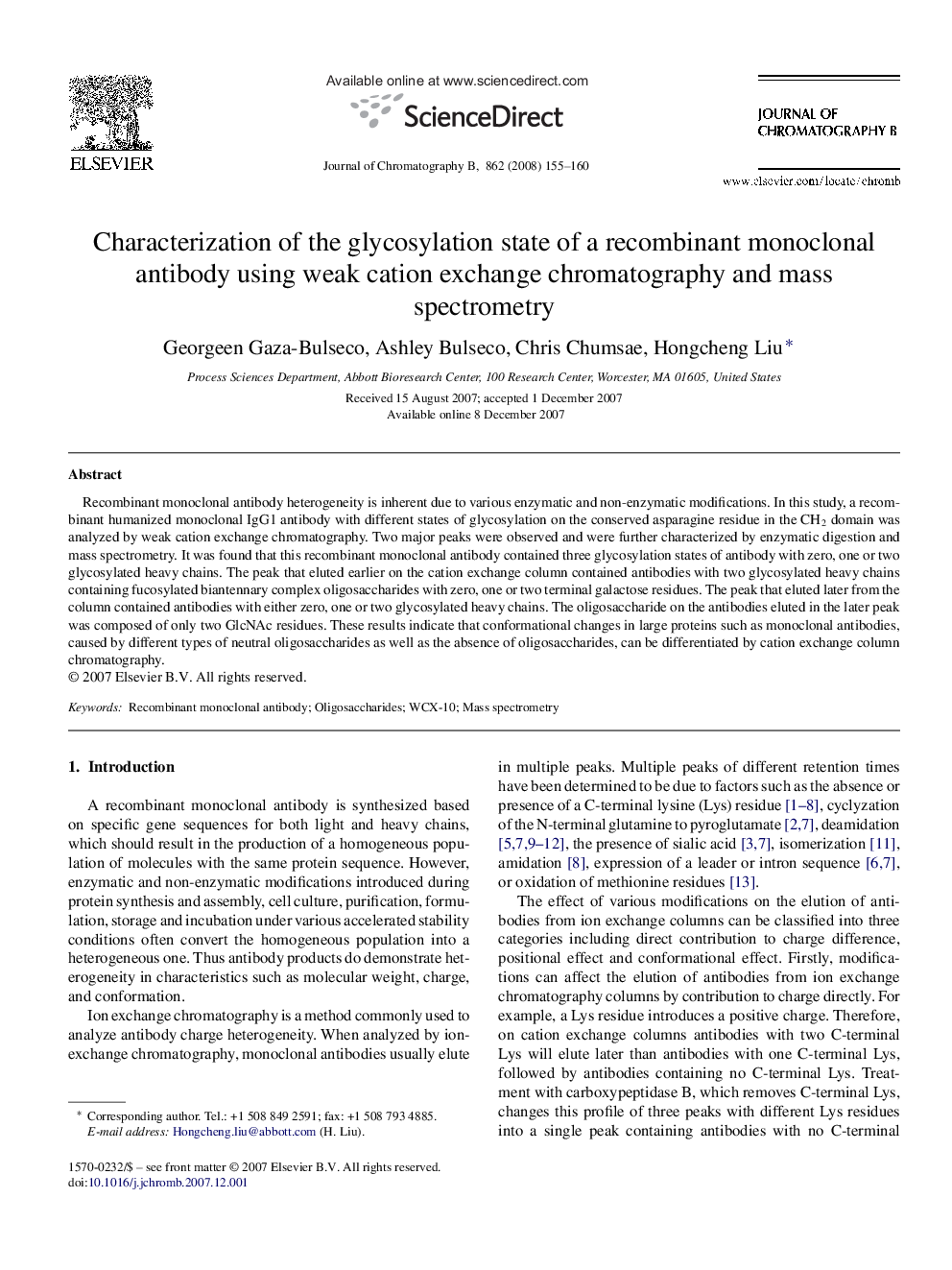| Article ID | Journal | Published Year | Pages | File Type |
|---|---|---|---|---|
| 1217660 | Journal of Chromatography B | 2008 | 6 Pages |
Recombinant monoclonal antibody heterogeneity is inherent due to various enzymatic and non-enzymatic modifications. In this study, a recombinant humanized monoclonal IgG1 antibody with different states of glycosylation on the conserved asparagine residue in the CH2 domain was analyzed by weak cation exchange chromatography. Two major peaks were observed and were further characterized by enzymatic digestion and mass spectrometry. It was found that this recombinant monoclonal antibody contained three glycosylation states of antibody with zero, one or two glycosylated heavy chains. The peak that eluted earlier on the cation exchange column contained antibodies with two glycosylated heavy chains containing fucosylated biantennary complex oligosaccharides with zero, one or two terminal galactose residues. The peak that eluted later from the column contained antibodies with either zero, one or two glycosylated heavy chains. The oligosaccharide on the antibodies eluted in the later peak was composed of only two GlcNAc residues. These results indicate that conformational changes in large proteins such as monoclonal antibodies, caused by different types of neutral oligosaccharides as well as the absence of oligosaccharides, can be differentiated by cation exchange column chromatography.
